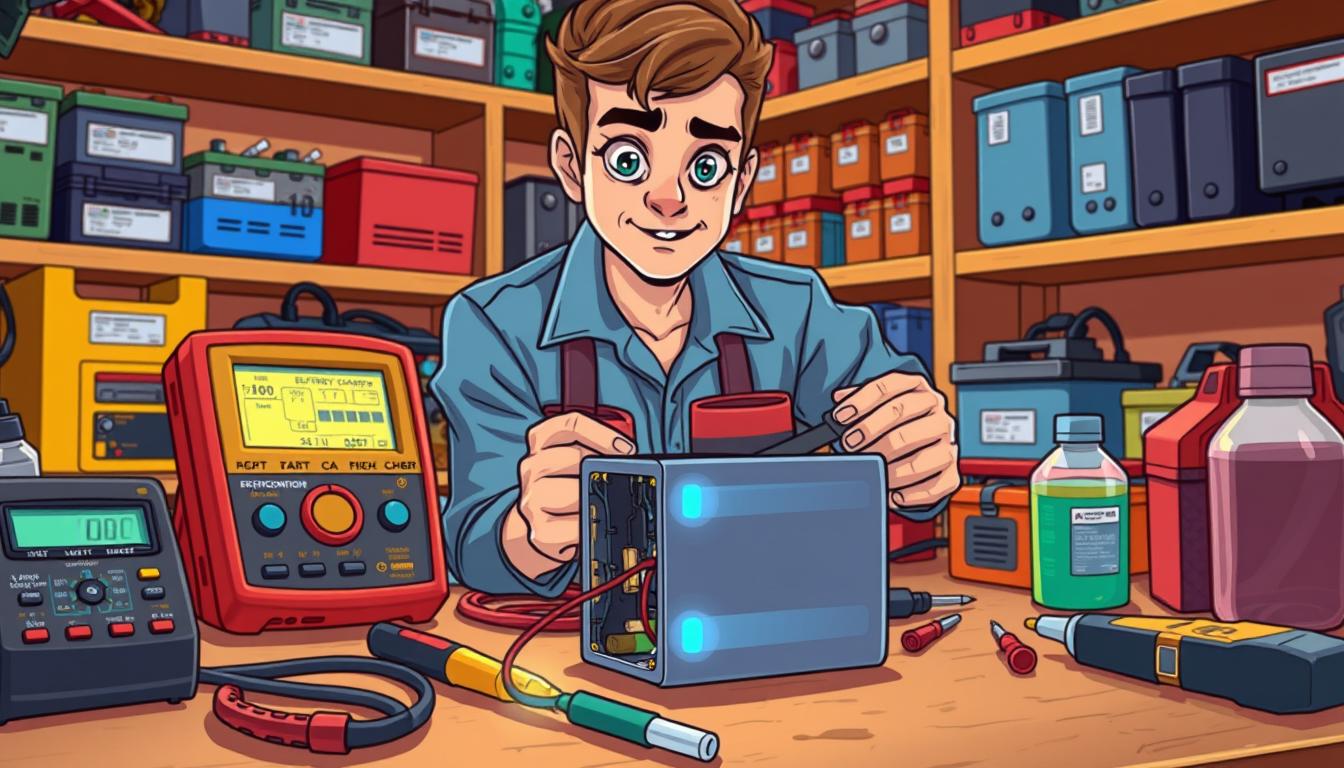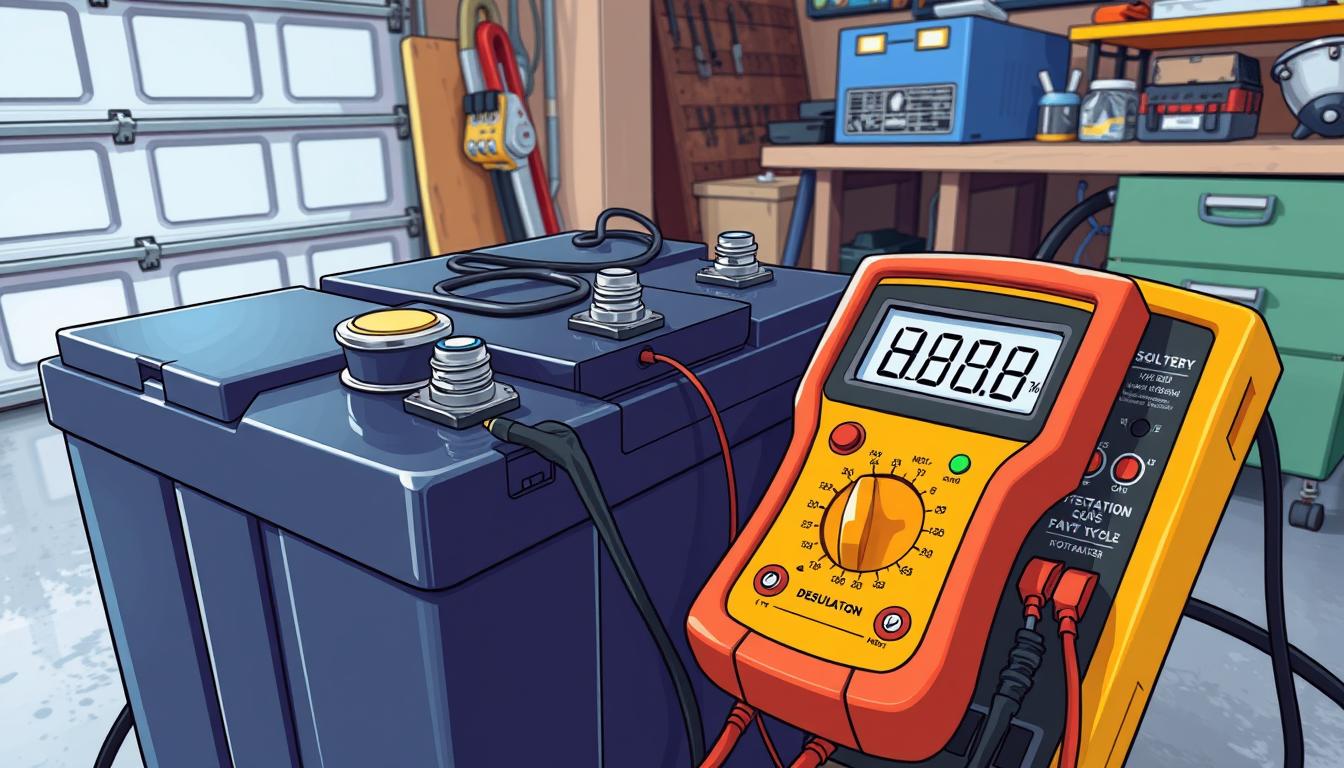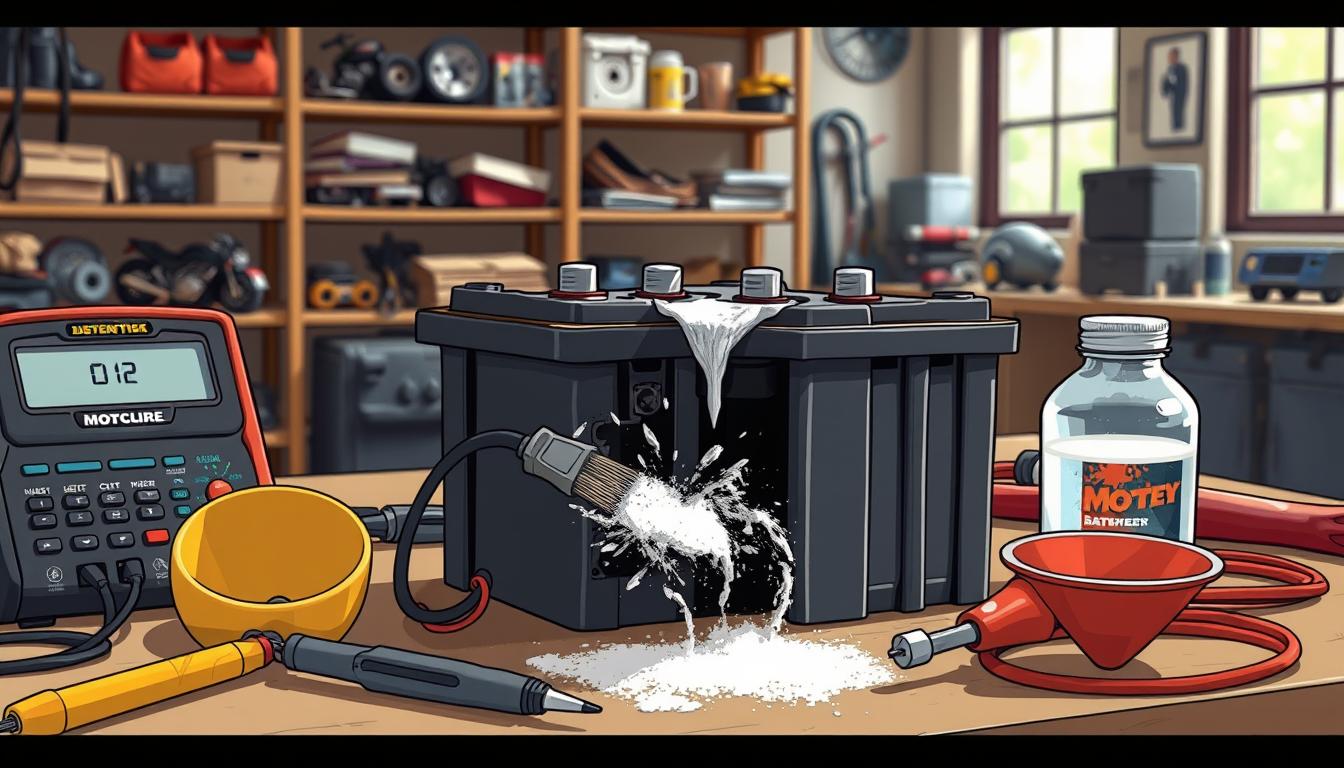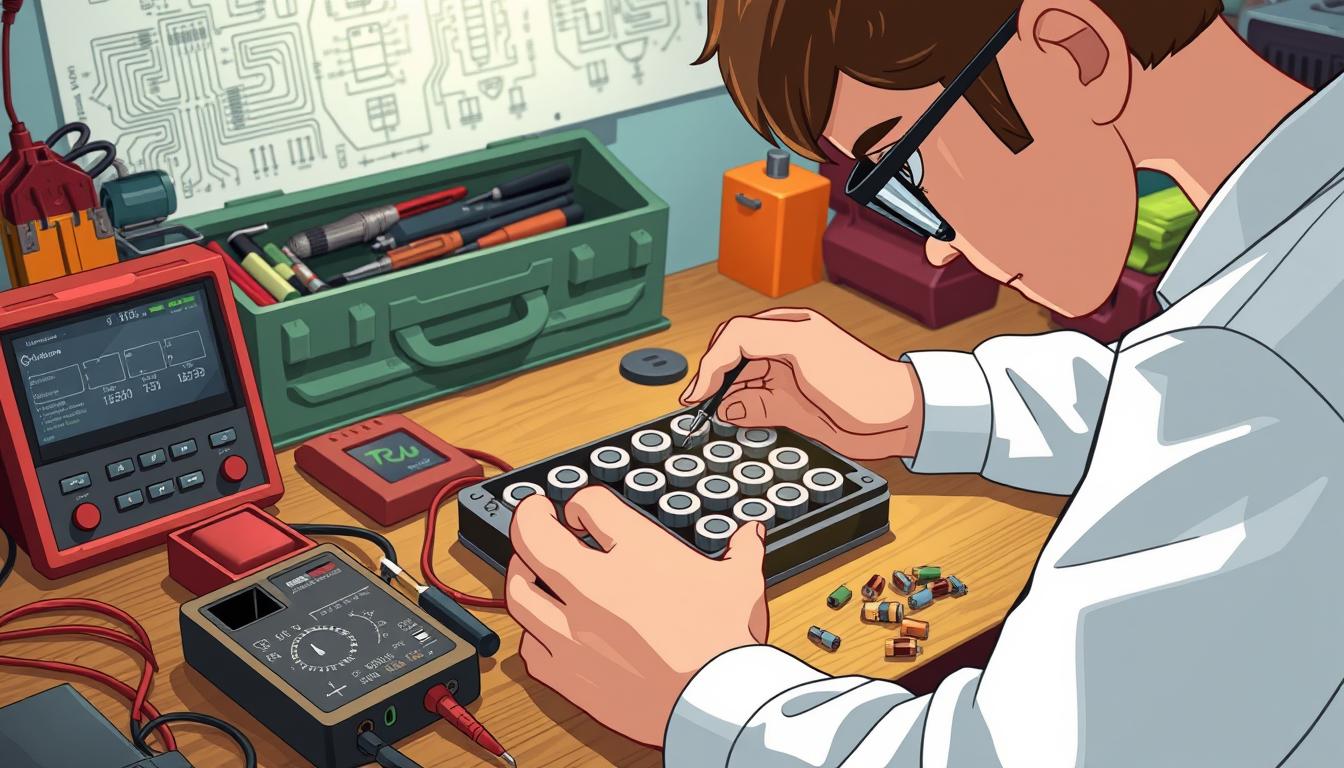Did you know that reconditioned batteries can sell for $19.99 with a 30-day warranty, often making them a popular choice among customers looking to save money1? In the world of batteries, one question frequently arises: does reconditioning a battery charge it? While battery reconditioning aims to enhance the functionality and health of a battery, it is essential to understand that this process is quite distinct from traditional charging. You might be curious about how these battery restoration techniques can empower you to make smarter choices regarding your battery care.
Key Takeaways
- Reconditioning can improve battery performance but does not equate to charging.
- Reconditioned batteries are often sold with warranties, indicating renewed reliability.
- The reconditioning process involves thorough inspection and maintenance of battery components.
- Understanding your battery’s needs can lead to informed decisions about maintenance.
- Battery restoration techniques can save you money compared to purchasing new batteries.
Understanding Battery Reconditioning
Battery reconditioning is an essential process that allows you to restore a battery’s capacity and enhance its lifespan. This technique is not just about recharging; it focuses on repairing the cells and removing harmful substances that can accumulate over time. Understanding the nuances of this practice can greatly benefit your battery’s health and reduce costs.
What is Battery Reconditioning?
What is battery reconditioning? It is the act of reviving a battery’s original performance through various methods. Reconditioning can save significant amounts of money by extending the life of existing batteries rather than replacing them2. Popular techniques include desulfation, equalization charging, and water addition for lead-acid batteries2. Remarkably, battery reconditioning can restore up to 80% capacity in high-quality lead-acid batteries within a year, especially if the battery is less than three years old3.
How Does it Differ from Charging?
Charging a battery simply replenishes energy levels, but it does not address internal issues like sulfation or cell imbalance. In contrast, battery rejuvenation seeks to repair and enhance the battery’s overall health. It’s crucial to note that frequent reconditioning can impact the cycle life of batteries4. While regular charging may seem sufficient, reconditioning provides a more sustainable and effective way to ensure longer battery life.
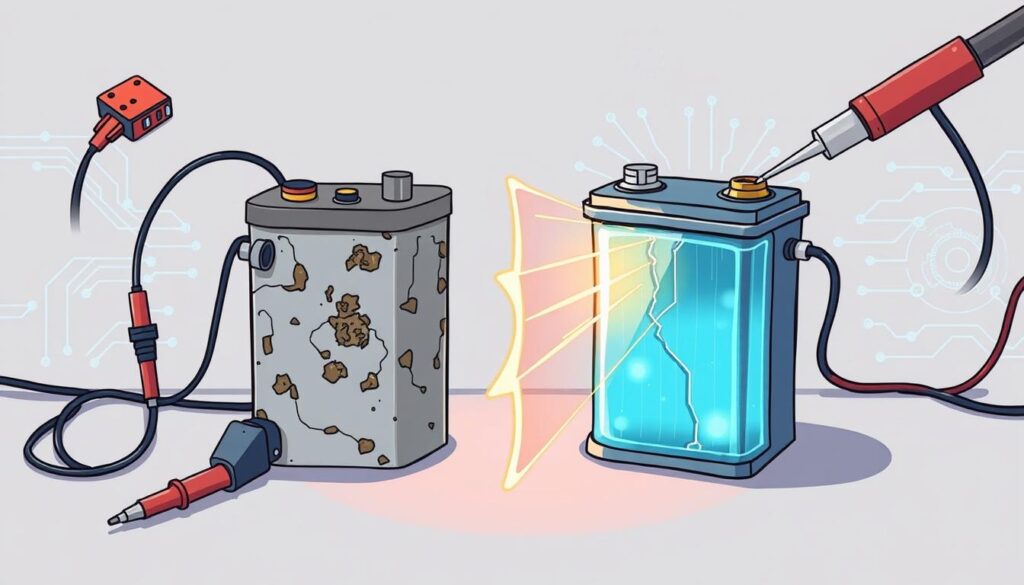
| Aspect | Charging | Battery Reconditioning |
|---|---|---|
| Purpose | Recharge energy levels | Restore original capacity and health |
| Methods | Conventional charging | Desulfation, equalization, etc. |
| Frequency | As needed | Depends on performance drops |
| Outcome | Temporary energy boost | Long-term performance improvement |
| Cost | Replacement costs | Generally lower than replacement |
The Purpose of Reconditioning a Battery
Understanding the purpose of reconditioning a battery is crucial for anyone looking to maximize their battery’s effectiveness. Reconditioning serves primarily to revive old batteries, targeting issues like sulfation and low electrolyte levels. This practice plays a vital role in restoring battery life and ensuring optimal performance over time. With effective methods, you can not only restore a battery’s health but also enhance its capacity to hold charge.
Restoring Battery Health
Restoring battery health is essential to its longevity and efficiency. Over 80% of the lifespan of an electric car battery is affected by sulfation, which diminishes its charging acceptance and overall performance5. Reconditioning techniques, such as the sulfation repair method, can successfully eliminate crystallized lead sulfate in just 10 to 20 hours6. Implementing these methods ensures you maximize the potential of your battery, enabling it to extend battery lifespan significantly.
Extending Battery Lifespan
When you recondition a battery, you take significant steps to extend battery lifespan. Regular maintenance and addressing sulfation not only prolong battery life but also lower replacement costs. For example, a well-maintained lead-acid battery can have its capacity restored by up to 80% within a year6. Keeping tabs on electrolyte levels and avoiding overcharging will further enhance its longevity. By actively engaging in reconditioning, you can create a sustainable approach to battery care.
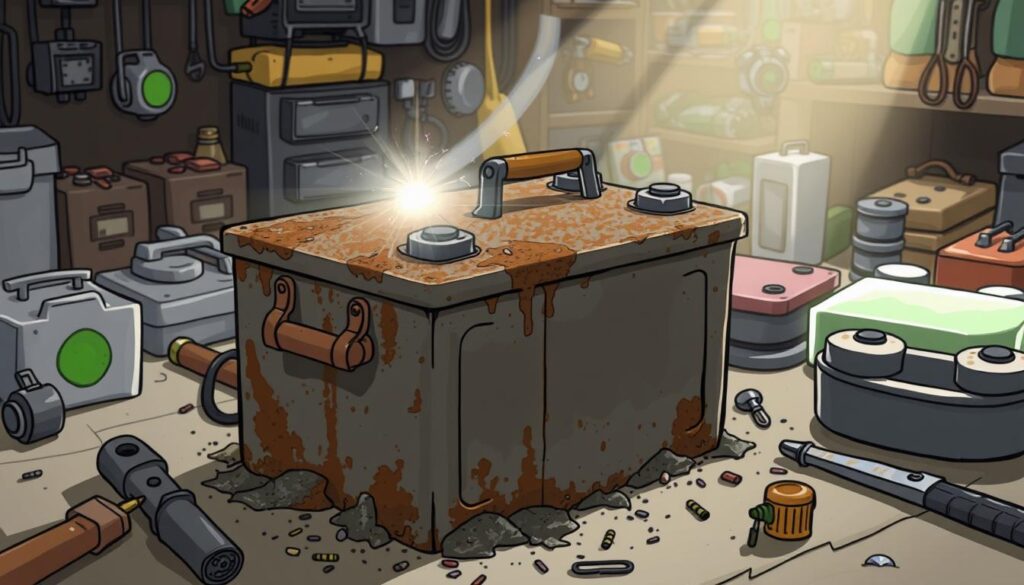
The Reconditioning Process Explained
Understanding how to recondition a battery can significantly enhance your battery’s performance and longevity. This section will guide you through the essential steps of the battery reconditioning process and the tools for battery restoration you may need to effectively tackle this task.
Step-by-Step Reconditioning Guide
Follow these steps to successfully recondition your battery:
- Assess Battery Condition: Check for any physical damage and measure the voltage with a multimeter.
- Add Distilled Water: If you are dealing with lead-acid batteries, add distilled water (if needed) to restore the electrolyte levels.
- Use a Dedicated Charger: Connect the battery to a specialized battery reconditioning charger to initiate the conditioning cycle.
- Deep Discharge: Perform a deep discharge while monitoring the voltages.
- Sulfation Removal: If sulfation is present, this process may take up to 40 hours to eliminate the harmful battery buildup.
- Final Check: After several cycles, check the battery’s voltage and overall performance using your multimeter.
Tools You May Need
To streamline the battery reconditioning process, gather the following tools:
- Multimeter
- Distilled water
- Dedicated battery reconditioning charger
- Battery sulfate removers (if needed)
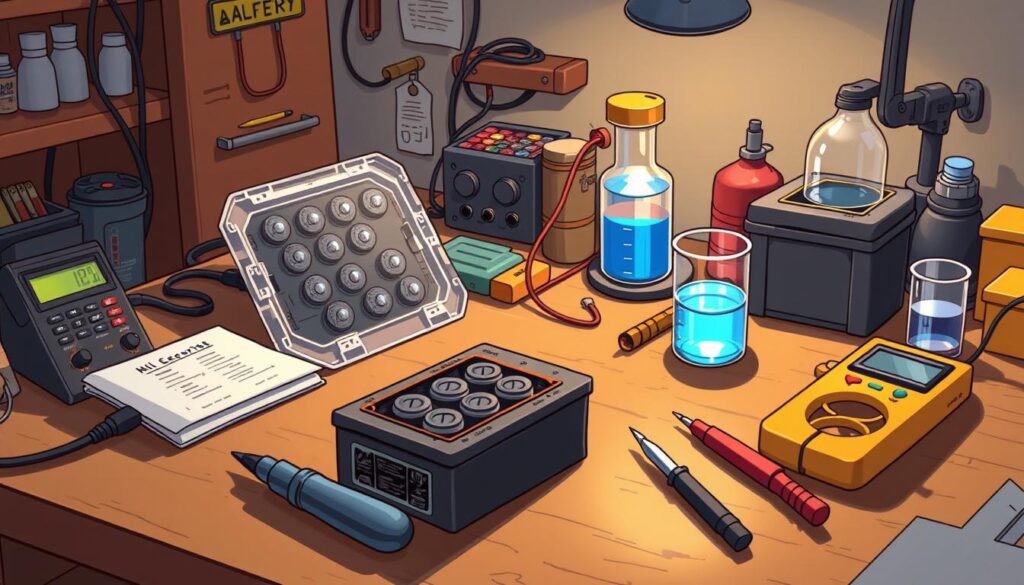
By ensuring you have the right tools and following the efficient steps outlined, you will not only learn how to recondition a battery but also extend its functional life, thereby maximizing your investment in battery upkeep78.
Can Reconditioning Actually Charge a Battery?
When you ask, “does reconditioning a battery charge it?” the answer is somewhat complex. Battery reconditioning can indeed enhance a battery’s capacity to hold a charge, yet it primarily aims to restore the chemical balance within the cells rather than simply providing a fresh charge. Many users have found that the process can yield significant improvements to their battery’s functionality.
The Role of Charge Cycles
The effectiveness of reconditioning often hinges on the number of charge cycles a battery has undergone. After multiple cycles, batteries can experience a decrease in capacity, but the reconditioning process can help reclaim some of that lost efficiency. In fact, a battery that is reconditioned properly might recover up to 80% of its original capacity within a year9. Additionally, it is important to recognize that while reconditioning can be beneficial, its effectiveness can fade over time, making tracking battery health vital.
Temporary vs. Permanent Solutions
One should consider whether reconditioning offers a temporary fix or a long-term solution. While many users report a noticeable improvement after reconditioning, this may not last indefinitely. About 100% of end-users discuss the benefits they have experienced, yet the ongoing viability of a reconditioned battery may depend on many factors, including the type of battery and the specific method used102. Understanding this can greatly inform your decisions, especially if you are looking at temporary battery solutions.
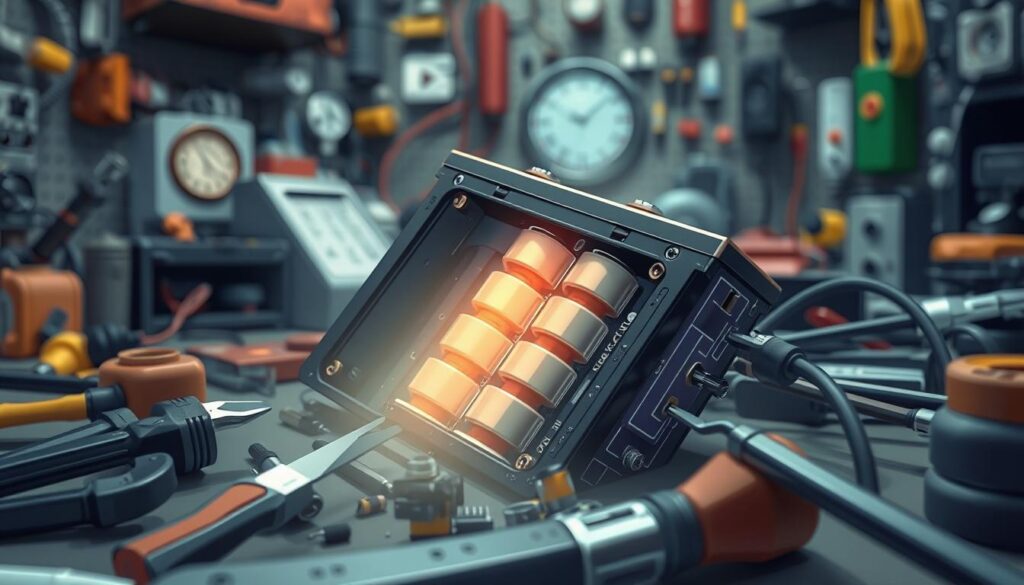
| Aspects | Temporary Solutions | Permanent Solutions |
|---|---|---|
| Effectiveness Duration | Short-term improvements | Long-lasting rejuvenation |
| Recovery Capacity | Varies by method | Up to 80% recovery9 |
| Common Use Cases | Quick fixes, emergency situations | Regular maintenance, longevity strategy |
| Cost-Efficiency | Lower initial investment | Potentially more savings long-term |
Benefits of Reconditioning Over Replacement
Choosing to recondition batteries instead of replacing them can provide substantial advantages for you. These benefits span across financial savings and environmental care. In both cases, understanding how reconditioning works can enhance your decision-making process.
Cost Savings
Reconditioning a battery can lead to impressive cost savings on batteries. Customers can potentially save up to 25-50% of the retail cost compared to purchasing new batteries11. Additionally, reconditioned batteries are often sold at prices like $19.99, complete with a 30-day warranty applicable towards new battery purchases1. This means that if you’re someone who relies on multiple devices powered by batteries, your financial benefits can accumulate quickly.
Environmental Impact
The environmental benefits of battery restoration are significant as well. By reconditioning, you participate in a sustainable practice aimed at reducing waste, contributing to lower electronic waste levels11. Most importantly, reconditioning helps extend the lifespan of batteries, which not only cuts down on disposal but also minimizes the demand for new battery production. This reduction supports a greener planet for future generations.
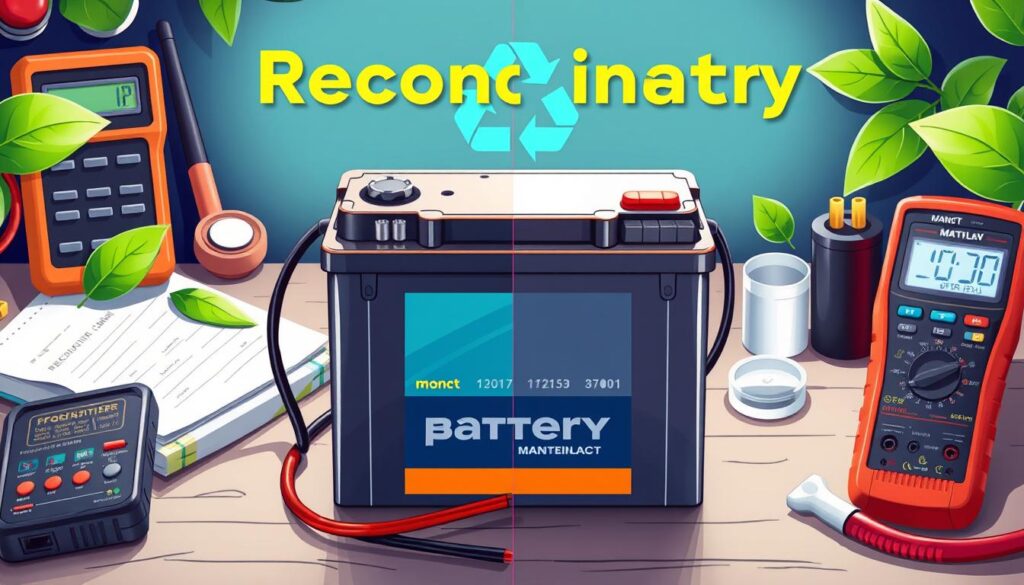
Overall, the decision to recondition batteries aligns both with personal financial interests and a commitment to environmental stewardship1.
Signs Your Battery Needs Reconditioning
Recognizing the signs indicating your battery requires reconditioning is essential for maintaining optimal performance. Pay attention to various symptoms that highlight battery issues, as addressing these problems early can save time and money.
Common Symptoms to Look For
Several common symptoms clearly indicate your battery may be deteriorating. Watch out for the following signs of battery deterioration:
- Reduced runtime for devices
- Slow starts in vehicles
- Dimming headlights while driving
- Overheating during charging
- Physical damage or swelling of the battery
If you notice any of these symptoms requiring battery restoration, it may be time to test and consider reconditioning options.
Testing Battery Performance
To accurately assess your battery’s health, you’ll want to regularly test battery performance. You can use a multimeter to check the voltage. Typically, batteries should read around 12.6 volts when fully charged. If the voltage is less than 3.5 volts, many chargers will not initiate charging12. For further confirmation, consider visiting an auto parts store for load testing, which can help reveal any hidden issues not apparent through simple voltage readings12.
Being proactive in monitoring these signs and conducting appropriate performance tests ensures that your battery remains effective for its intended purpose, minimizing the risk of complete failure.
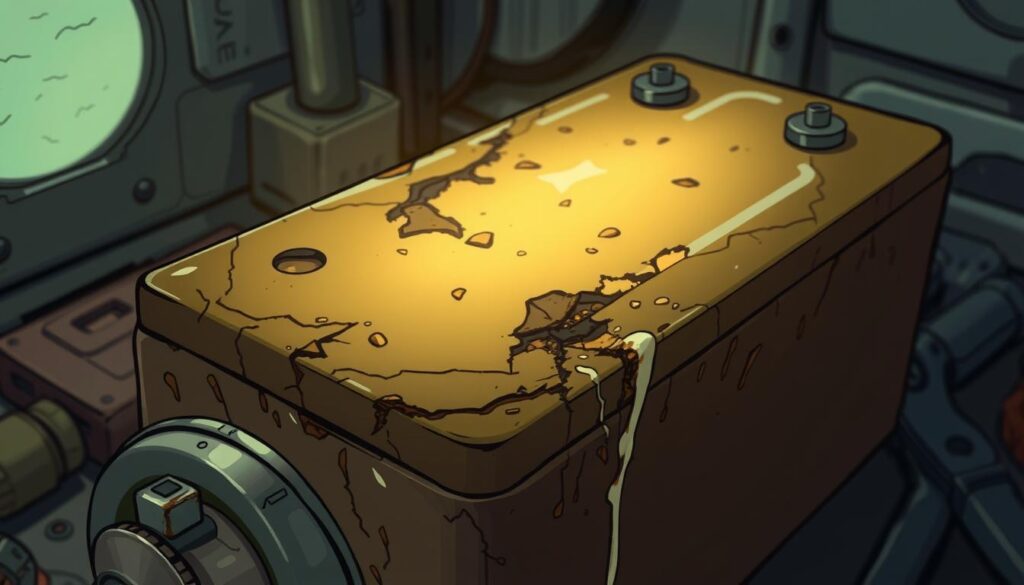
Addressing these key signs can significantly extend the battery’s lifespan, allowing for cost-effective maintenance rather than unexpected replacements2.
Safety Precautions During Reconditioning
Understanding the importance of safety during battery reconditioning is vital for ensuring a smooth and incident-free process. Proper precautions can significantly minimize the risks of battery reconditioning and enhance your overall experience. Here are some best practices and tips.
Best Practices and Tips
- Work in a well-ventilated area to avoid hazardous gas buildup.
- Wear protective gear, including goggles and neoprene gloves, to safeguard against battery acid.
- Use tools such as a flathead screwdriver and a plastic funnel safely and effectively.
- Ensure that the battery’s voltage remains above 10 volts for effective reconditioning13.
- Following maintenance practices can optimize battery lifespan by avoiding extreme temperatures and ensuring proper charging14.
Risks to Be Aware Of
Engaging in battery reconditioning comes with certain risks that you must be aware of:
- Gas accumulation can lead to potential explosions if not managed properly during the reconditioning process.
- Battery acid can cause severe burns, making protective gear non-negotiable.
- Improper charger settings can lead to overcharging or undercharging, which may harm battery health15.
- Frequent monitoring of voltage and current is essential to avoid common issues such as overheating15.
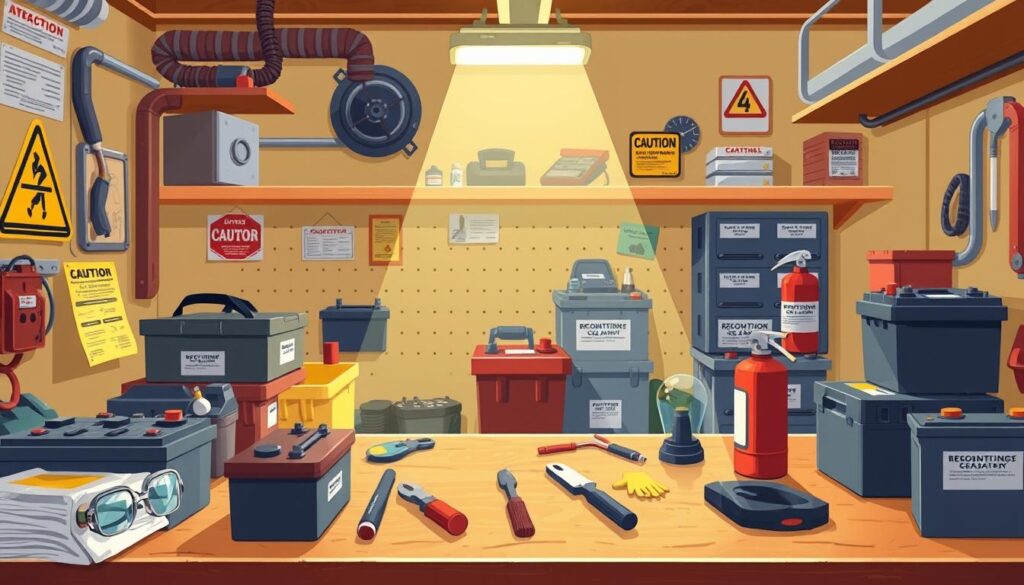
By adhering to these safe battery restoration tips, you can effectively minimize the risks of battery reconditioning and achieve better results14.
Conclusion: Is Reconditioning Worth It?
Deciding whether battery reconditioning is the right choice for you hinges on the specific condition of your battery and your individual needs. If your battery is relatively new but exhibiting signs of decline, it may be worth pursuing reconditioning. On the other hand, if you notice visible damage or a significant performance drop, opting for a replacement might be the more practical solution. Ultimately, battery maintenance practices, including timely reconditioning, can enhance your battery’s longevity and reliability, giving you greater peace of mind on the road.
When to Recondition vs. Replace
Look for common symptoms such as slow engine starts or dimming headlights which may signal that your battery needs reconditioning. Tools like a multimeter or hydrometer can be crucial in evaluating battery health before deciding on reconditioning. In many cases, reconditioning can save both money and reduce waste by prolonging the lifespan of your existing battery, making it a cost-effective and eco-friendly choice16
Final Thoughts on Battery Care
Engaging in battery care tips such as reconditioning when appropriate can contribute significantly to battery performance. Various devices like Schumacher and CTEK chargers have been shown to improve battery condition and longevity after using desulphation methods17. By following safety precautions during the reconditioning process, you not only ensure your safety but also maximize the potential benefits of this eco-friendly option. Consider these factors to make an informed decision about your battery care strategy moving forward16.
FAQ
Does reconditioning a battery charge it?
What is the battery reconditioning process?
How do you recondition a battery?
Can you revive an old battery with reconditioning?
Do battery restoration techniques really work?
What common tools are needed for reconditioning a battery?
How can I tell if my battery needs reconditioning?
What safety precautions should I take during the reconditioning process?
Is battery reconditioning worth it?
Source Links
- https://www.garagejournal.com/forum/threads/automotive-battery-reconditioning.507513/ – Automotive battery reconditioning
- https://www.ufinebattery.com/blog/battery-reconditioning-explained-a-comprehensive-guide/ – What You Should Know About Battery Reconditioning
- https://www.tycorun.com/blogs/news/battery-reconditioning?srsltid=AfmBOoobusI3whaZPwUgJnCV5wOQjVfS_XzgUrqpuALQz_nLhdjhGL6O – Can battery reconditioning be achieved and how effective it is
- https://www.wvbandcoms.com/blogs/blog/reconditioning-batteries?srsltid=AfmBOoq84z_x5415OuCDrVZXc2eIx0boOMJd1L6-Vgm9ppD6YUUC3yIy – Why You Need to Recondition Two-Way Radio Batteries
- https://www.accord-power.com/news-media/blog/1784261084388003842.html – Lead-acid Battery Reconditioning Frequently Asked Questions
- https://www.tycorun.com/blogs/news/battery-reconditioning?srsltid=AfmBOopLo9g_dMuRB-hm9hWUEL2e-jMwiE03gdZwkunNI-JqV8_oKGbD – Can battery reconditioning be achieved and how effective it is
- https://www.tycorun.com/blogs/news/battery-reconditioning?srsltid=AfmBOopoeXdvRWqdNBmDfN5VPeDyHDi3Ft4e1j9bp79VCZHtSRiHEzSI – Can battery reconditioning be achieved and how effective it is
- https://www.nuvant.com/blog/hybrid-battery-reconditioning-guide – Hybrid Battery Reconditioning Guide | Nuvant Systems Inc.
- https://www.tycorun.com/blogs/news/battery-reconditioning?srsltid=AfmBOoovDu8e9iWub-I_aS72ed2VLywoeqtyZs5zFkcG48Q3vzwHuhQf – Can battery reconditioning be achieved and how effective it is
- https://www.audizine.com/forum/showthread.php/898516-Anyone-use-a-battery-charger-reconditioner-to-salvage-a-battery – Anyone use a battery charger / reconditioner to salvage a battery?
- https://wiki.armello.com/index.php/5_Simple_Ways_For_What_Does_Battery_Reconditioning_Do_Discovered – 5 Simple Ways For What Does Battery Reconditioning Do Discovered
- https://www.thecj2apage.com/forums/reconditioning-a-battery_topic51339_page2.html – Reconditioning a battery?
- https://carfromjapan.com/article/car-maintenance/recondition-a-car-battery-by-5-step-method/ – How To Recondition A Car Battery In 5 Easy Steps
- https://www.genixenergy.com/battery-knowledge/how-to-recondition-lithium-ion-batteries-a-comprehensive-guide-to-reconditioning-lithium-ion-batteries.html – How to recondition lithium ion batteries?A Comprehensive Guide to Reconditioning Lithium-Ion Batteries
- https://www.linkedin.com/pulse/battery-reconditioning-charger-revive-your-batteries-today-hasan-urtmc – Battery Reconditioning Charger: Revive Your Batteries Today!
- https://www.linkedin.com/pulse/car-battery-reconditioning-revive-your-life-today-md-masud-hasan-08y0c – # Car Battery Reconditioning: Revive Your Battery Life Today!
- https://www.tractorbynet.com/forums/threads/smart-battery-chargers-with-reconditioning-modes.380125/ – Smart battery chargers with reconditioning modes

